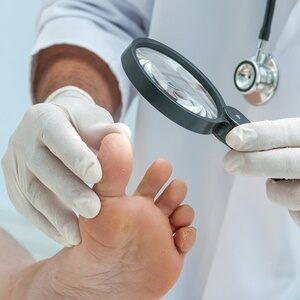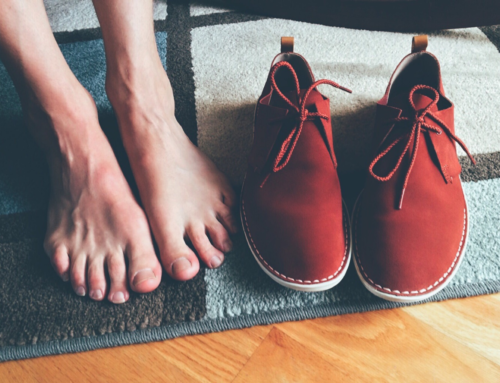Nail Fungus and Nail Bed Separation go hand in hand for most people. Most symptoms of nail fungus are fairly indicative of the condition itself since they aren’t commonly caused by other conditions. Common symptoms of nail fungus include discoloration of the nail and changes in the nail’s texture. These changes may be brittleness, cracking, or flaking of the nail material. When you notice these changes in your nail’s appearance, it is likely because of a fungal infection. However, there are also symptoms of toenail fungus that don’t indicate the condition with as much confidence. One of these is called onycholysis, or the detachment of the nail from the nail bed itself.
Nail Lifting
What are the causes? Well, typically, the most common cause of a loosening nail is trauma. In other words, if you have caused an injury to the nail, such as hitting it against a hard surface, dropping heavy objects, or sustaining sports-related injuries.
This may also occur as a result of repeated activities such as typing or playing instruments that require nail use. Poorly done manicures and pedicures may also be a cause. For example, being too rough or going too far with deep cleaning beneath the nail.
Lastly, medical conditions such as psoriasis or weakened immunity can cause onycholysis as well. As far as psoriasis goes, it often changes the way the nails grow and may weaken due to antibiotics, which causes the nails to lift when exposed to the sun. Chemotherapy weakens the immune system in general, which also affects nail growth and causes detachment and/or fungal.

The lifting of a nail can, unfortunately, cause dirt and moisture to collect underneath the nail, which therefore causes bacterial growth and fungus formation.
If this is something that you suffer from, be sure to clip your nails back as often as possible, keeping them short. Furthermore, you should definitely seek treatment from a medical specialist and try to keep the nail attached/intact by wrapping it with a bandaid or taping it down until you see a doctor.
Causes of the nail bed separation
When the nail detaches from the nail bed, this is common because of a fungal infection. As the fungus grows under the nail, it degrades the nail material and weakens its attachment to the nail bed. A detachment of the nail follows. This presents as the nail seeming not to be connected to the skin at the point where it normally is. While nail separating from the nail bed shouldn’t cause any pain itself, sometimes the detached nail can get caught on things and be pulled back. This occurrence can cause pain and make the detachment worse.
While onycholysis is a common symptom of nail fungus, there are other reasons why it can develop. When the nails are especially long, sometimes the additional length can make it easy for the nail to be physically pulled back. If the nail gets caught on something like fabric, for example, the force on the nail coupled with its long length can almost “rip” the nail off of its bed.
Treatment for Nail Fungus and Nail Bed Separation
If you have caught toenail fungus, it can be easily treated using the FDA-approved PinPointe laser, which typically only takes one treatment.
Our toenail doctor in Orlando, FL, recommends this treatment. The PinPointe Laser treatment has the highest cure rate in the market. It has no side effects and no recovery period. As a result, you can go about your daily activities right after the treatment. Also, it is not painful.
If you have any signs of nail fungus, call us at (800) 672-0625 or visit our website for more information on our doctors at one of our over 150 locations.





